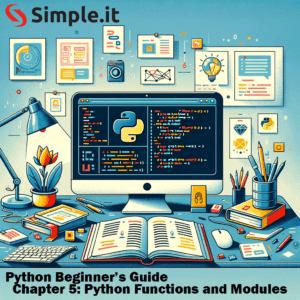1. Introduction
Welcome to Lesson 6 of our PHP 8 Free Course! In Lesson 5, we explored the object-oriented paradigm in PHP. Now, we’ll delve into the crucial subject of Exception and Error Handling. Effective error and exception handling is paramount for building reliable, robust applications. This lesson will equip you with the knowledge to manage runtime errors and exceptions proficiently, ensuring your PHP applications run smoothly even when unforeseen issues arise. Before proceeding, feel free to review previous lessons or navigate through the course via the PHP 8 Free Course index.
PHP 8 Free Course – Lesson 6: Exception and Error Handling
2. The Landscape of Errors and Exceptions
Both errors and exceptions represent issues that arise during the execution of a program. Understanding the distinction and how PHP handles these issues is the foundation of effective error and exception handling.
- Errors: Indicate serious problems that occur during script execution, usually resulting from wrong code syntax or logic that PHP cannot bypass.
- Exceptions: Represent exceptional conditions that a script should catch and are a modern way to handle errors or unexpected conditions.
3. Navigating Error Handling in PHP
PHP 8 categorizes problems into two types: Error and Exception, both implementing the Throwable interface, which allows for sophisticated error handling mechanisms.
- Error Reporting:
ini_set('display_errors', 1);
ini_set('display_startup_errors', 1);
error_reporting(E_ALL);The snippet above configures PHP to display errors and startup errors, making it easier to identify and fix issues during development.
- Custom Error Handlers:
function custom_error_handler($errno, $errstr, $errfile, $errline) {
echo "Error: [$errno] $errstr - $errfile:$errline";
exit();
}
set_error_handler("custom_error_handler");Creating a custom error handler allows for more controlled error management, enabling developers to handle errors in a manner suited to their application’s requirements.
4. Exception Handling: The Modern Approach
Exception handling in PHP employs the try, catch, and finally blocks, offering a structured approach to managing exceptional conditions in a script.
- Utilizing Try, Catch, Finally:
try {
// Code that may throw an exception
throw new Exception('An exception occurred');
} catch (Exception $e) {
// Code to handle the exception
echo $e->getMessage();
} finally {
// Code to be executed regardless of whether an exception was thrown
echo 'The process is complete.';
}The try block encloses code that may throw an exception, the catch block handles the exception, and the finally block executes code post handling, ensuring the script continues to run smoothly.
5. Triggering Exceptions: A Closer Look
Triggering exceptions manually allows for robust error checking and handling, ensuring your application can respond to exceptional conditions in a controlled manner.
- Throwing Exceptions:
function checkNumber($number) {
if($number > 5) {
throw new Exception('The number is too high');
}
return true;
}
try {
checkNumber(6);
} catch (Exception $e) {
echo $e->getMessage();
}This snippet demonstrates how to throw and catch exceptions, a powerful tool for enforcing certain conditions in your code.
6. Exercises
- Exploring Error Handling:
- Create a script that triggers an error and handles it using a custom error handler. Explore how different error levels affect error reporting.
- Exception Handling Practice:
- Design a script that throws an exception under a specific condition, catches the exception, and displays a custom error message.
- Advanced Challenge:
- Craft a class with methods that throw and handle various types of exceptions, showcasing polymorphism in exception handling.
7. Further Reading
Dive deeper into the realm of error and exception handling with these resources:
- Examine the official PHP manual on Error Handling to grasp the full spectrum of error handling functionalities in PHP.
- Explore Exception Handling in PHP on W3Schools for tutorials on managing exceptions.
- Delve into PHP The Right Way’s section on Error Handling to learn about best practices in error and exception handling.
Continue your learning journey with Lesson 7: Working with Forms and Data and discover how to securely process user input in PHP. As always, refer to the PHP 8 Free Course index to navigate through the course.
This expanded lesson delves deeper into the realms of error and exception handling in PHP, elucidating the nuances between errors and exceptions, how to handle them proficiently, and how to manually trigger exceptions when necessary. Exercises and further reading sections are also enhanced to provide a thorough understanding of the topic at hand.



Pingback: PHP 8 Free Course Index - Simple IT